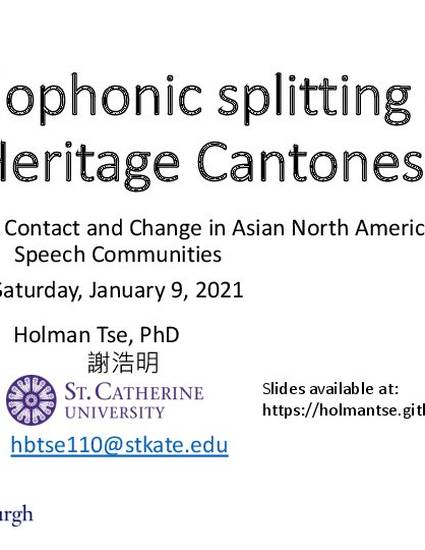
Presentation
The pre-nasal allophonic splitting of /ɛ/ in Toronto Heritage Cantonese
Linguistic Society of America (LSA) 2021 Annual Meeting
(2021)
Abstract
Muysken (2019) has argued that the most convincing cases of contact-induced change in heritage languages involve the dominant language having two distinctions mapping on to one (2-to-1). Evidence of such a case from Toronto heritage Cantonese will be discussed. Toronto English (the dominant language) has an allophonic split in which the TRAP vowel is raised and fronted in pre-nasal contexts. This is argued to influence the development of a similar allophonic split, led by lower proficiency speakers, in which Cantonese /ɛ/ is fronted before nasal consonants. The lack of an /ɛ/ split in Hong Kong Cantonese provides further support for contact-induced change. Unlike cases of a 1-to-2 mapping leading to a loss of a distinction in the heritage language (which can be argued to be internally motivated), this contact-induced split leads to increased phonological complexity, which is inconsistent with a deficit view of heritage language speech production.
Keywords
- sound change,
- language contact,
- bilingualism,
- heritage languages,
- Chinese (Yue)
Disciplines
Publication Date
January 9, 2021
Location
Virtual
Citation Information
Holman Tse. "The pre-nasal allophonic splitting of /ɛ/ in Toronto Heritage Cantonese" Linguistic Society of America (LSA) 2021 Annual Meeting (2021) Available at: http://works.bepress.com/holman-tse/11/
Creative Commons License

This work is licensed under a Creative Commons CC_BY-NC International License.
